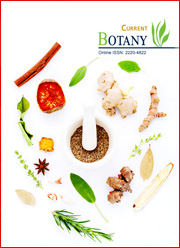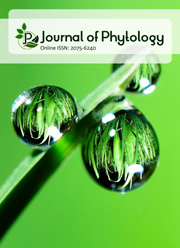Regulation of enzymatic and non-enzymatic antioxidants contributes to salt tolerance in hitherto unknown upland farmer rice varieties.
DOI:
https://doi.org/10.25081/cb.2020.v11.6019Keywords:
salt tolerance, upland farmer varieties, enzymatic and non- enzymatic antioxidants, antioxidant systemAbstract
Salt tolerance potential of the three upland farmer varieties, koduvelliyan, mullankayama and marathondi was evaluated by comparing with the released salt-tolerant pokkali variety, vytilla-2. The salt tolerance exhibited by the upland varieties was identical with the salt tolerant variety. The superoxide (O2-) content in the upland varieties was lower; however, the hydrogen peroxide (H2O2) content increased with the salt concentration. The lesser malondialdehyde (MDA) content in the koduvelliyan variety was equivalent to the vytilla-2 and slight increase was observed in mullankayama and marathondi. The ascorbate (AsA) content in the upland varieties was comparable to vytilla-2 and upon exposure to increased concentration of NaCl, the AsA level reduced in all the treatments. Reduced glutathione (GSH) content was uniform in all the varieties up to a concentration of 100mM NaCl, however, in 125-150mM NaCl, mullankayama showed a pronounced increase in GSH content. Under salt stress, due to the formation of O2-, the oxidation of GSH was higher, maintaining a stable GSH/GSSG ratio. Superoxide dismutase (SOD) and catalase (CAT) activity of the upland varieties was higher than vytilla-2 up to 100mM NaCl, however, in 125-150mM NaCl the SOD activity increased slightly and the CAT activity decreased. Ascorbate peroxidase (APX) activity increased in upland varieties up to 125mM NaCl, and in 150mM NaCl, maintained a steady level in all the varieties. Glutathione reductase (GR) activity increased proportionate with NaCl concentration; with highest activity in all the upland varieties. Monodehydroascorbate reductase (MDHAR) activity was uniform in all the varieties up to 100mM NaCl, however, in 125 and 150mM NaCl, vytilla-2 showed higher MDHAR activity. Dehydroascorbate reductase (DHAR) activity was lesser in upland varieties under salt stress compared to vytilla-2. The GSH/GSSG ratio decreased in marathondi and koduvelliyan varieties with the increase in NaCl concentration, however, in mullankayama and vytilla-2, the GSH/GSSG ratio was higher. The membrane stability index of all the varieties was uniform in all the concentrations of NaCl used, except marathondi. The Na+ content in all the varieties increased in relation to NaCl concentration and the K+ efflux was higher suggesting a higher Na+/K+ ratio, with increased NaCl concentration.



 .
.